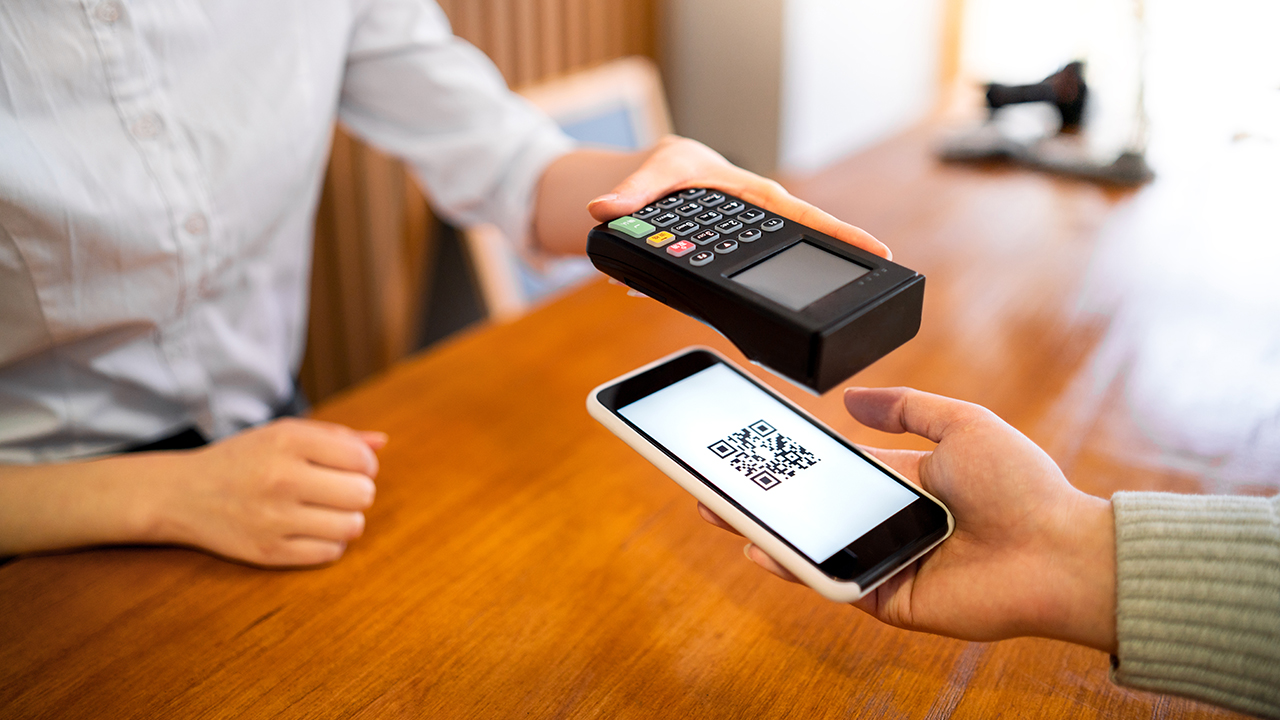The point-of-sale terminal market is growing. A recent report suggests that by 2022 the POS terminal market could reach a total value of just under $100 billion. In the digital age, consumers prefer the convenience of credit and debit cards as well as payment apps like Apple Pay. Cash is on the decline and in some countries, like Sweden, traditional currency is nearly extinct. Retailers who want to maintain their edge must adapt to the market, and for many, increasingly sophisticated POS and wireless POS (WPOS) terminals are the solution.
What Is Wireless Point-of-Sale?
 Wireless point-of-sale systems are handheld POS devices that can go anywhere. Very simply, they are not wired, which frees the merchant's employees to carry the transaction system in a pocket or apron, or simply to present it to a customer from behind the counter. These systems typically connect wirelessly to a base station, and behave exactly the same as a wired system. WPOS systems today can be as simple as a gadget the employee adds to a cell phone, but more commonly are part of a complete vendor solution that includes handheld devices or iPads along with a software management system.
Wireless point-of-sale systems are handheld POS devices that can go anywhere. Very simply, they are not wired, which frees the merchant's employees to carry the transaction system in a pocket or apron, or simply to present it to a customer from behind the counter. These systems typically connect wirelessly to a base station, and behave exactly the same as a wired system. WPOS systems today can be as simple as a gadget the employee adds to a cell phone, but more commonly are part of a complete vendor solution that includes handheld devices or iPads along with a software management system.
Trends in POS and WPOS
1. Smart Systems for Brick and Mortar Businesses
POS technology has advanced dramatically in the last 10 years. Brick and mortar retailers today have a range of enhanced features at their fingertips to help them compete with their online counterparts, and both artificial intelligence and machine learning will play a greater role over time. Based on shopping habits, POS systems can segment customers into groups for targeted marketing promotions. These systems can also keep the retailer apprised of unsold products taking up shelf space, to support more proactive inventory management.
POS systems can also improve staffing management by identifying the businesses’ busiest hours and making predictions about when the next rush will occur. These recommendations will get better over time, too. Every month that you use a “smart” POS terminal is another month of data that the system can analyze to improve its predictive capabilities.
2. Cloud-Based Solutions
 Many retailers will turn to the cloud, allowing them to retrieve data anytime, anywhere and from any device. Cloud offers an enormous improvement in flexibility and security for many retailers, especially mobile retail businesses, as data stored in the cloud has a level of redundancy that can be difficult or costly to replicate locally.
Many retailers will turn to the cloud, allowing them to retrieve data anytime, anywhere and from any device. Cloud offers an enormous improvement in flexibility and security for many retailers, especially mobile retail businesses, as data stored in the cloud has a level of redundancy that can be difficult or costly to replicate locally.
Cloud computing also makes it easier to manage multiple stores. A cloud-enabled POS system can link geographically separated terminals, providing access to aggregated sales data and payroll information. Plus, cloud-enabled terminals are easier to update. With cloud solutions such as Digi Remote Manager®, you can quickly push changes to all of your terminals at once instead of manually changing each one.
3. Cellular Network Failover Protection
No matter how well a retail business is operating, even a temporary interruption in its point-of-sale system can cause headaches for staff and customers as well as a loss of revenue. If a backhoe slashes through the local Internet cable or a service provider has an unplanned outage, the retail business needs to have a reliable backup system. And the best protection against a break in wired connectivity is wireless connectivity.
Cellular network failover protection enables a retail POS system to switch over to a redundant or standby network connection automatically if the primary connection is disrupted. Any business that uses point-of-sale terminals should avoid the risk of a business interruption by including
cellular failover protection in their POS deployment.
4. Handheld WPOS Systems
 WPOS (Wireless Point of Sale) is increasingly the best solution for a number of scenarios. For example, in outdoor restaurants where there’s a greater risk of customers leaving without paying, servers can carry a handheld device, connected by Wi-Fi to the on-site POS system, and charge customers as they order. A café that experiences congestion at peak hours can have roving baristas take orders and process payments with a mobile device, reducing the load on the cashier and saving time for the customer.
WPOS (Wireless Point of Sale) is increasingly the best solution for a number of scenarios. For example, in outdoor restaurants where there’s a greater risk of customers leaving without paying, servers can carry a handheld device, connected by Wi-Fi to the on-site POS system, and charge customers as they order. A café that experiences congestion at peak hours can have roving baristas take orders and process payments with a mobile device, reducing the load on the cashier and saving time for the customer.
Additionally, many retailers prefer the convenience of a mobile point-of-sale system that allows workers to move about the store and take orders or run transactions anywhere, anytime.
The next generation of WPOS systems are both affordable and durable. These systems have a number of advantages besides reducing customer wait times and improving the efficiency of the business. Cost reduction is the most obvious. Additionally, wireless systems require less equipment and are cheaper to maintain, making WPOS a smart and economical choice.
Preparing for the Future
With the right technology on your side, you will be ready for what’s next. What if you could use data gathered from your POS systems to increase your sales conversion rate by 10% or more? If a computer crash wipes your hard drives but you’ve got all of your data backed up on the cloud, getting your store up and running is that much simpler.
Digi can support your business today with cellular extenders to ensure you are always connected, as well as out-of-band access for your IT team to troubleshoot your retail system connectivity from anywhere. Contact us today to learn about Digi solutions for Retail.